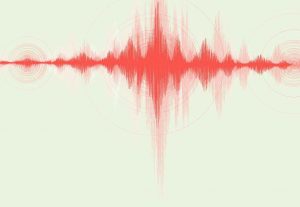 Someday—probably in some crowded city in a developing country—an earthquake will come along that causes a million casualties, warns seismologist and President of GeoHazards International Brian Tucker ’67.
Someday—probably in some crowded city in a developing country—an earthquake will come along that causes a million casualties, warns seismologist and President of GeoHazards International Brian Tucker ’67.
What’s Next For:
Revolutions?
Syria?
Mexico?
Japan?
The United States?
Earthquake Safety?
Climate Action?
California Water?
Climate Science?
Solar Energy?
California Fruit Farming?
Technology Investing?
Nanoscience?
Digital Storage?
Artificial Intelligence?
Cyber-Threats?
Social Media?
Space Exploration?
Science Museums?
The Sagehen?
Biodiversity?
The Blind?
Big Data?
Mental Illness?
Health Care Apps?
Maternity Care?
Etiquette?
Ballroom Dance?
Thrill Seekers?
Outdoor Recreation?
Funerals?
Writers?
Movies?
Manga?
Alt Rock?
Women in Mathematics?
Tucker specializes in mitigating earthquake risks, but he believes it may take just such a mega-disaster to force governments to act. “Unfortunately, major advances in earthquake preparedness come after disasters,” he says. “I think the next big advance will occur when a big disaster takes place and it grabs people’s attention and the attention of governments.”
One of those advances he would like to see is wider adoption of earthquake early warning systems (EEW) like the ones developed in Mexico during the 1990s and in Japan way back in the early 1960s. China also has such a system, as do Taiwan and Turkey.
Soon, so will the United States.
The concept of an early warning system in the U.S. has been discussed as far back as the 1860s in a letter to the San Francisco Daily Evening Bulletin. Tucker himself wrote in the late 1980s about modeling a warning system in California after Japan’s when he served as director of California’s Geological Survey.
The biggest problem (other than financing) is that California faultlines offer a special challenge. In Japan and Mexico, earthquakes originate offshore and seismic waves have farther to travel before affecting urban centers. In California, population centers sit right on top of fault lines, giving less time for warnings.
Today, however, a U.S. version of the system is finally in the works. “Thanks to advances in telecommunication and the internet,” he says, “an early warning system should become part of Californians’ lives in the next 10 years.”
However, he doesn’t expect it to be easy. “It needs to be thoroughly tested, and people need to be trained in what a warning means and what it doesn’t mean,” says Tucker. “One danger would be having too many warnings that didn’t result in damage, because people would lose faith in the system. Another would be accurate warnings of damaging earthquakes that give too little time for people to react.”
The first stages of an early warning system in California would communicate directly to “non-humans,” according to Tucker. “The application will first be to things such as electrical power plants or subways,” he says. “It will communicate directly to trains telling them to slow down, communicate to hospitals to switch their electrical power to a backup system. It could also automatically open the doors of fire stations before strong shaking occurs. This could become automatic without going through a human, which would be a really great first step in application.”
The beauty of these initial measures is that they come at “no cost.” It doesn’t matter if it’s a false alarm, whereas the tricky thing is issuing alarms directly to humans, because they may panic, or they may get annoyed if it’s a false alarm.
Eventually, Tucker believes California’s system will get to a point where it’s sophisticated enough to communicate directly to people. Japan already has that, he says.
“The warning in Japan’s Tohoku earthquake and tsunami in 2011 was directly to people,” he says. “An amazing fact about that earthquake is that only three percent of the population that was living in the inundation zone of the tsunami was killed. Unfortunately, that amounted to 19,000 people, but, if you go to other places like Sumatra, they expect something like 50 percent of the population living in the inundation zone to die because of lack of warning and lack of preparation.”
